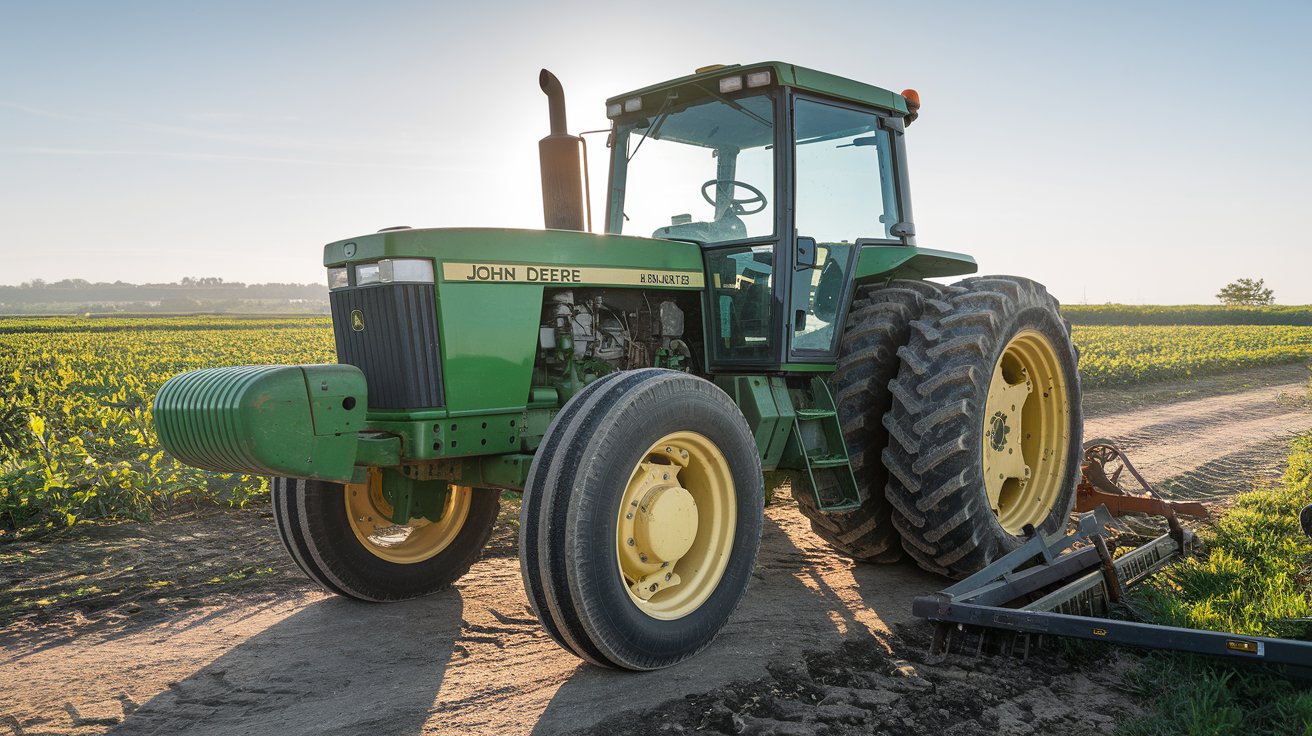Introduction
If you’ve been stuck with a John Deere that won’t move forward or reverse, don’t panic—this guide has covered the major reasons behind such issues and provided practical solutions, whether it’s transmission, hydraulics, or simple operator settings. Performing regular maintenance like checking hydraulic and transmission fluids, replacing filters, and ensuring proper operation can prevent most forward/reverse problems from occurring. For more complex situations, professional help might be required, but not before trying some DIY-friendly fixes.
Want to dive deeper into troubleshooting or prevent such problems entirely? Discover tips for proactive long-term maintenance or learn how to recognize early warning signs of mechanical failure. Think you might need additional advanced troubleshooting guides?
Rest assured, there’s hope! In this article, we’ll break down the most common causes for this problem and provide actionable fixes that even non-mechanics can tackle. Whether it’s a transmission hiccup or a hydraulic glitch, we have your back.
Common Causes for John Deere Not Moving Forward or Reverse
1. Transmission Issues
One of the foremost causes why your John Deere won’t move in either direction lies in its transmission system. Whether it’s mechanical or hydrostatic, any malfunction in the transmission can bring the machine to a standstill.
- Signs to Watch For: Difficulty shifting gears, weird noises, or lack of response when throttling.
- Fixes:
- Check the transmission fluid; dirty or low fluid can be a huge culprit. Replace or refill if necessary.
- Inspect for a clogged transmission filter. It’s often overlooked but can severely affect performance.
- Consult your owner’s manual for specific guidance, especially if it’s hydrostatic transmission-related.
2. Hydraulic System Problems
John Deere machines rely heavily on hydraulics for their operations. A compromised hydraulic system can cause the forward/reverse functionality to fail altogether.
- Possible Causes: Air in the hydraulic line, worn-out seals, or low hydraulic fluid.
- Fixes:
- Bleed the air out of the hydraulic system.
- Check for leaks in hoses or fittings and replace them.
- Top off the hydraulic fluid, ensuring it meets the manufacturer’s recommended levels.
3. Operator Error or Incorrect Settings
Sometimes, the issue might not be mechanical at all but as simple as settings being off or operation errors.
- Examples: Wrong gear selected, parking brake engaged, or cruise control malfunction.
- How to Fix It:
- Double-check the gear position and settings.
- Make sure the parking brake is fully disengaged.
- Refer to the tractor’s manual for operational clarity.
Possible Quick Fixes to Test
Before calling in the cavalry (or a costly mechanic), try some of these troubleshooting steps:
- Perform a Visual Inspection: Look for visible damage around the transmission, hydraulics, and gears.
- Check Electrical Connections: Loose or corroded connections can sometimes masquerade as mechanical issues.
- Reboot the System: Sometimes, simply turning off the machine and restarting it can reset internal systems and solve the issue.
- Software Errors: If your tractor is more advanced, make sure the software is updated. Outdated software can lead to unresponsive controls.
When to Seek Professional Help
While many fixes are DIY-friendly, not every issue is safe or straightforward to handle on your own.
- Transmission Overhaul: If nothing else works, it could point to internal breakages requiring expert intervention.
- Electrical Diagnoses: Advanced electrical issues might require specialized tools.
- Persistent Hydraulic Issues: When bleeding lines or replacing hoses doesn’t work, it’s time for a pro.
Proactive Maintenance Tips
To avoid running into these headaches, it’s always better to maintain your John Deere proactively. Here’s how:
- Fluid Levels Checks: Regularly check both transmission and hydraulic fluids.
- Inspect Filters: Keep debris and dirt away by maintaining clean filters.
- Scheduled Servicing: Don’t skip on professional servicing—your equipment will thank you.
Frequently Asked Questions (FAQs)
1. Why won’t my John Deere move forward or reverse?
This issue is usually caused by transmission problems, hydraulic issues, or incorrect operational settings. Always start by checking the fluid levels, filters, and gear settings.
2. What should I do if my transmission fluid is low?
Refill the transmission fluid using the fluid type recommended in your John Deere owner’s manual. Check for leaks that may have caused the low level.
3. Can a clogged transmission filter stop my tractor from moving?
Yes, a clogged filter can prevent proper fluid flow, leading to transmission failure. Cleaning or replacing the filter often resolves this issue.
4. What are the signs of hydraulic system failure?
Common signs include difficulty moving forward or reversing, strange noises, and sluggish or unresponsive controls. Low hydraulic fluid or air in the system are frequent culprits.
5. How can I fix air trapped in hydraulic lines?
Bleed the hydraulic system by following your John Deere manual’s instructions. Air affecting fluid pressure is a common issue for hydraulic systems.
6. Why won’t my John Deere move even after topping up all the fluids?
If fluid levels are correct and the machine still doesn’t move, there could be deeper issues like electrical faults, a faulty gear system, or internal damages.
7. Is it safe to perform DIY repairs on my John Deere?
Simple issues like refilling fluids or fixing loose connections are safe to DIY. However, for complex repairs like electrical diagnostics or transmission rebuilds, seek professional help.
8. What can cause my John Deere’s controls to become unresponsive?
Electrical system faults, outdated tractor software, or corroded connections could all make controls unresponsive. Inspect the electrical components and ensure the software is updated.
9. Could a worn-out seal cause my John Deere to stop moving?
Yes, worn-out seals in the hydraulic system can lead to fluid leaks, lowering hydraulic pressure, which can cause movement failures. Inspect and replace seals as needed.
10. What’s the best way to prevent forward/reverse issues on my John Deere?
Regular maintenance is key: check fluid levels, inspect and replace filters, and ensure hoses and seals are in good condition. Always operate the machine correctly to avoid unnecessary wear and tear.
Conclusion
Having a John Deere that won’t move forward or reverse can harm productivity, but most issues are fixable with a bit of detective work or some elbow grease. Whether it’s transmission hiccups, hydraulic glitches, or operational settings that went awry, following this guide can solve the majority of these issues and keep your tractor running smoothly.
Remember, proactive maintenance and an eye for detail go a long way in extending the life of your equipment. When in doubt, know when to call in the professionals—but always start with the basics!

